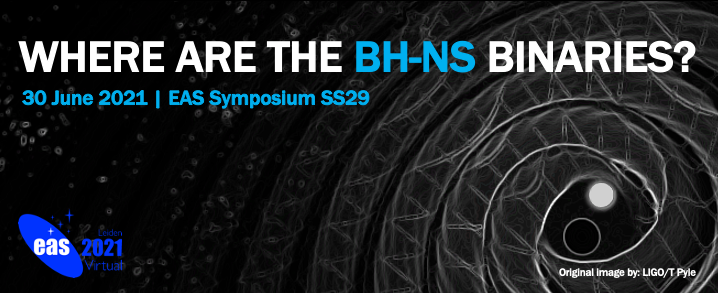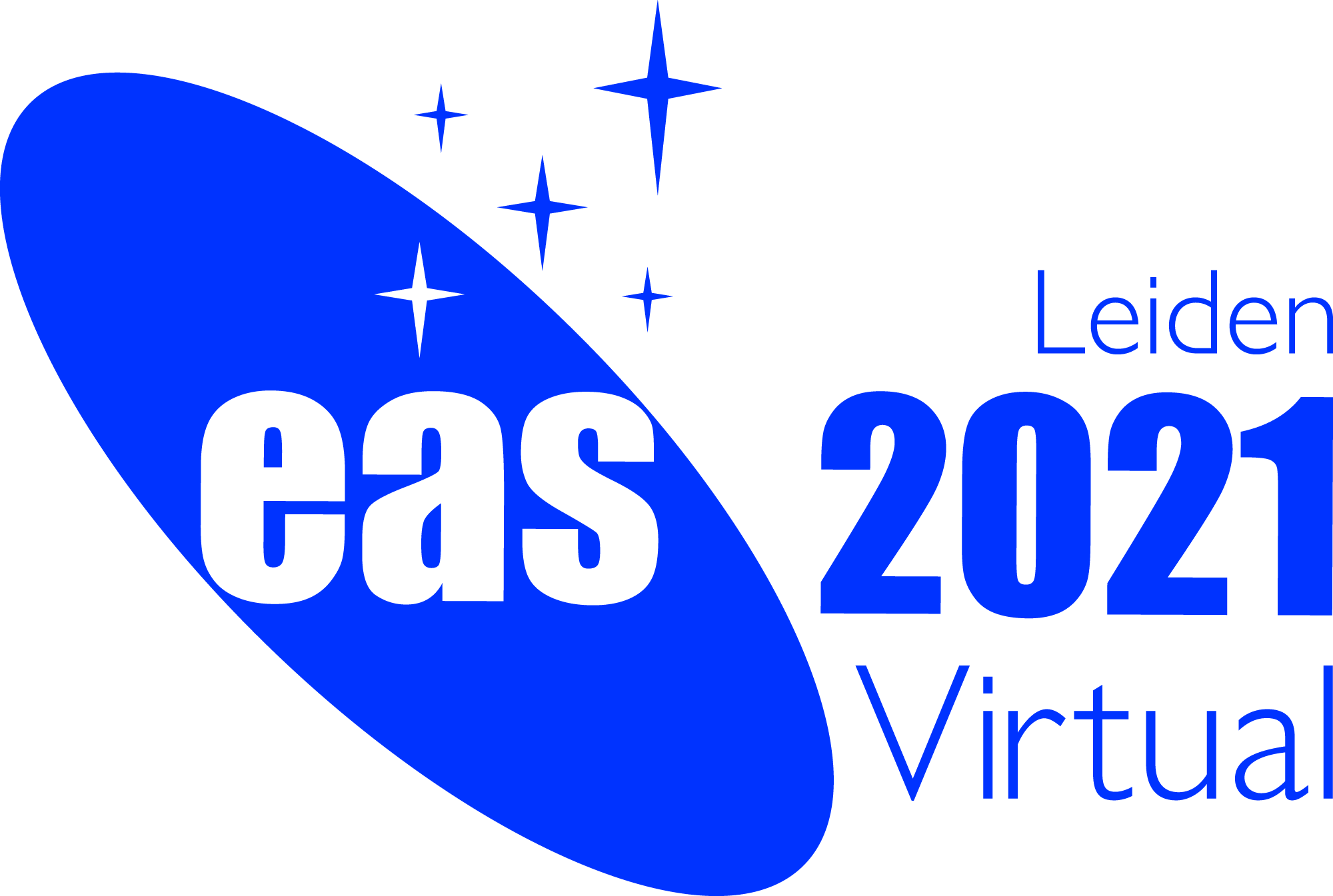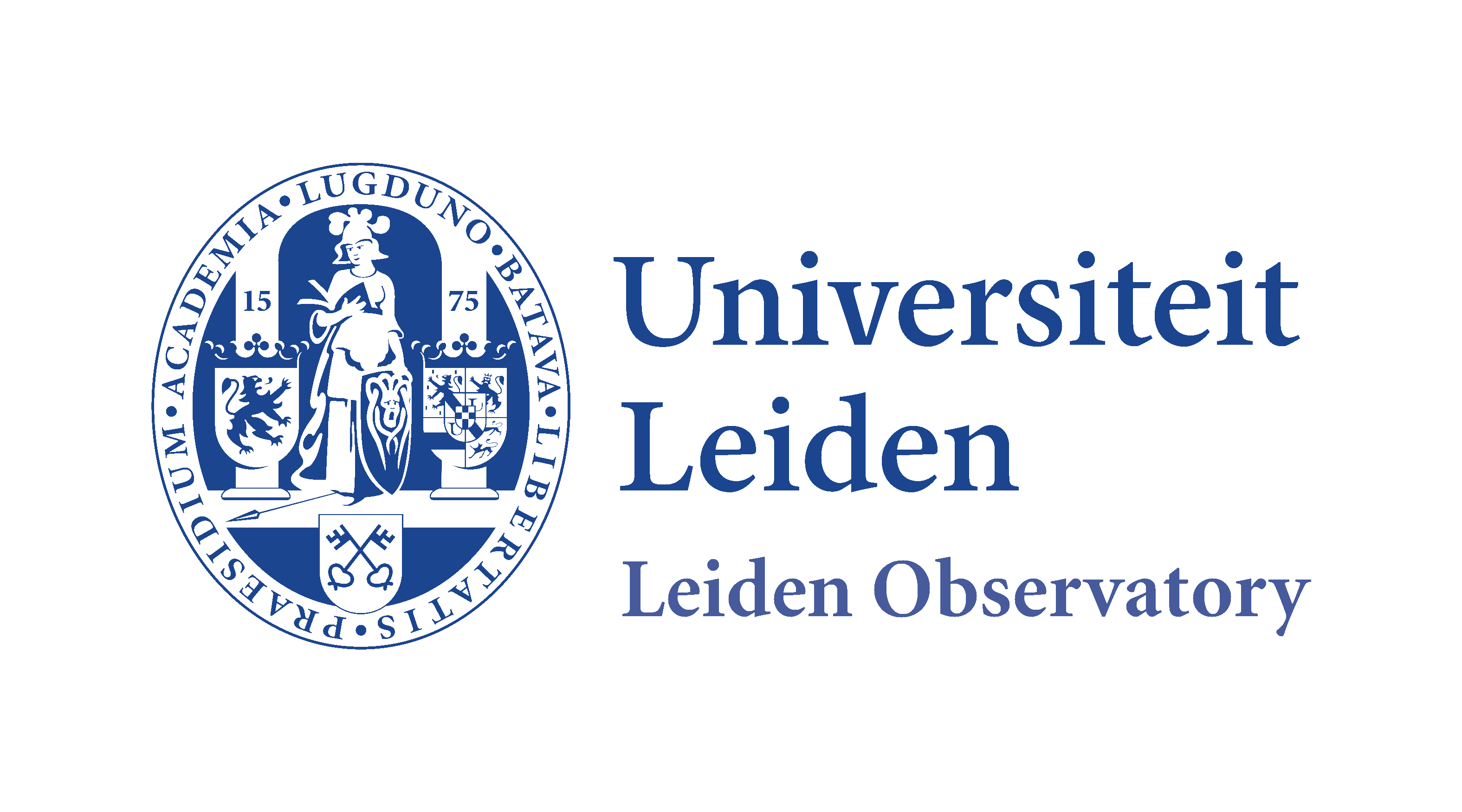Special Session SS29
30 June 2021
Where are the BH-NS binaries?

News:
Abstract deadline is approaching!
Aims and scope
After observing tens of binary black hole (BBH) and binary neutron star (BNS) systems throughout the past 50 years of radio and 5 years of gravitational wave surveys, we are still eagerly awaiting the first confident detection of a black hole and neutron star (BH-NS) system. Observations of BH-NS systems will not only provide confirmation that these systems exist in our Universe, they will also give unique insights into the death of massive stars, the evolution of binary systems and their possible association with X-ray binaries, gamma-ray bursts, r-process enrichment and kilonovae. However, due to the lack of an observed population of BH-NS, many of their properties remain a mystery.
This EAS special session will aim to discuss and demystify BH-NS systems and try to answer the main questions: where are the BH-NS systems hiding? And if we find them, what can we learn from their observations? The session aims to bring together observers and theorists to tackle these questions and discuss the path forward for the field to learn about the formation, evolution and observation of BH-NS systems.
We will have slots available for talks (10+2 min) and accept poster submissions. See the abstract submission page from EAS 2021 to see more information about how to apply.
Programme
- How do we observe a BH-NS system? (pulsar-BH systems, electro-magnetic signatures of BH-NS systems, gravitational-wave observations, X-ray observations)
- How do BH-NS systems form? What are the (population) predictions for BH-NS? (dynamical formation, field formation, chemical homogenous evolution, triples/multiples etc.)
- What can we learn from observations of BH-NS? And how do we go forward? (measurements of the Hubble constant and EOS, tests of GR, learning about the cosmic star formation history or (binary) star evolution. )
Invited speakers
- Christopher Berry University of Glasgow, (UK)
- Jan (JJ) Eldridge University of Auckland, (New Zealand)
- Om Salafia INAF - Astronomical Observatory of Brera (Italy)
- Tassos Fragos Observatoire Astronomique de l?Université de Genève (Switzerland)
- Silvia Toonen University of Amsterdam and University of Birmingham (The Netherlands / United Kingdom)
Scientific organisers
- Floor Broekgaarden (chair) Center for Astrophysics | Harvard & Smithsonian, USA floor.broekgaarden[at]cfa.harvard.edu
- Ilya Mandel (co-chair) Monash University / Ozgrav, Australia, ilya.mandel[at]monash.edu
- Andrew Levan (co-chair) Radboud University Nijmegen, Netherlands / University of Warwick, UK, a.j.levan[at]warwick.ac.uk
- Michela Mapelli (co-chair) University of Padova, Italy, michela.mapelli[at]unipd.it
Contact
floor.broekgaarden @ cfa.harvard.edu
Updated on Fri Feb 26 04:03:08 CET 2021
|

 A power cut will shut down all EAS services on Tuesday, 10 January 2017 starting at 7:30 CET.
A power cut will shut down all EAS services on Tuesday, 10 January 2017 starting at 7:30 CET.


